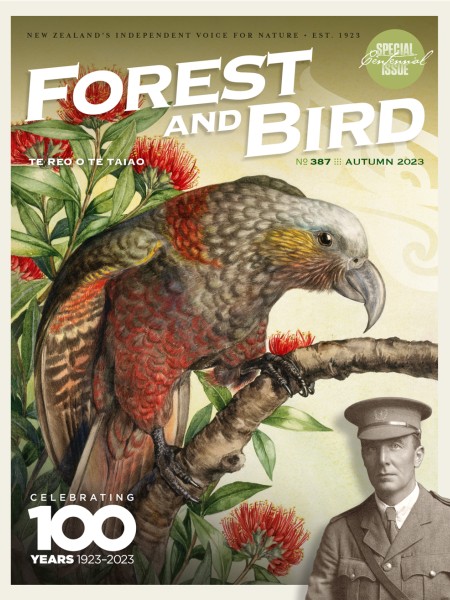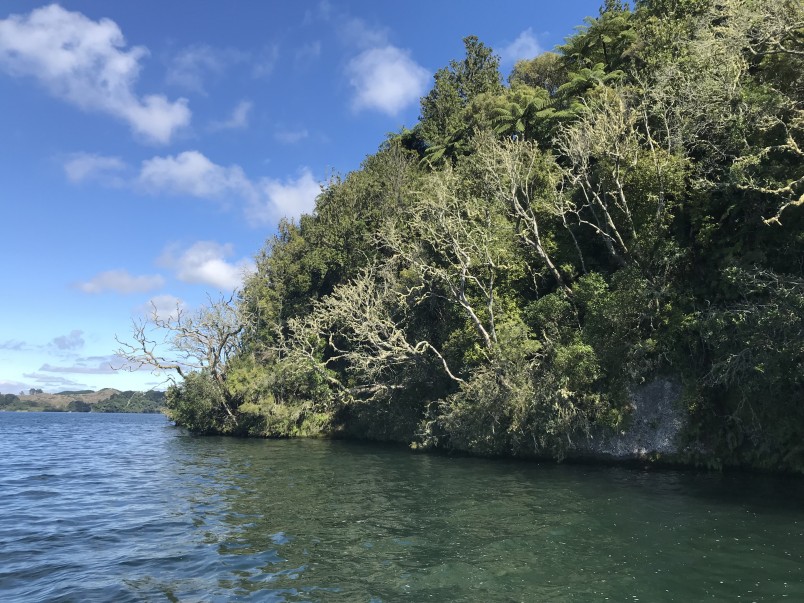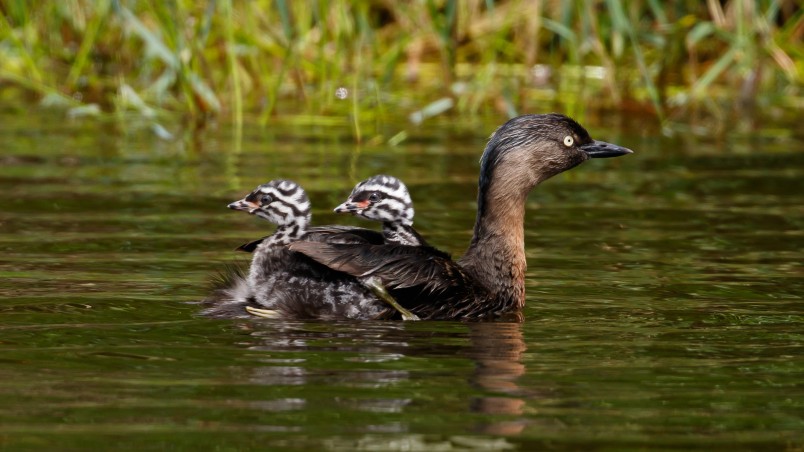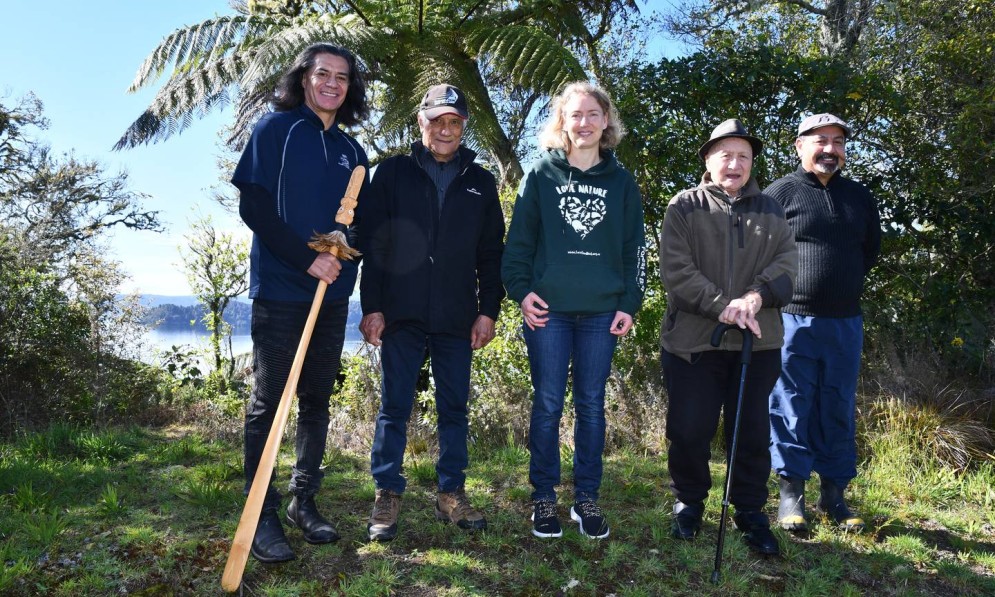Forest & Bird is working with local iwi to restore the mana of Lake Rotoiti’s scenic reserves, its precious pōhutukawa, and weweia dabchicks.
Forest & Bird magazine
A version of this story was first published in the Autumn 2023 issue of Forest & Bird magazine.

Ancient pōhutukawa are an important part of the scenic reserve network at Lake Rotoiti, north of Rotorua, but they are being browsed to death by possums.
The mauri of the reserves, which were gifted by Ngāti Pikiao to the Crown 100 years ago, is threatened by the possums’ destruction of these taonga trees.
They are part of the special character of the lakeside and play a critical role in structurally protecting Ngāti Pikiao archaeological sites, including food and burial caves.
Last year, Forest & Bird’s Vice-President Kate Graeme, a regular visitor, approached the Lake Rotoiti Scenic Reserve Board and explained possums were to blame for the dying pōhutukawa.

Possum-ravaged trees on the edge of Lake Rotoiti. Image Kate Graeme
She worked with Lake Rotoiti Scenic Reserve Board member Ted Taiatini to develop a predator-free project to restore the reserves.
“We’ve got to look after our whenua,” said Ted Taiatini. “The most important thing is to nurture the forest, trees, and bush because these plants help our survival.”
The Bay of Plenty Regional Council stepped up to help, providing funding for more than half of the project’s costs and invaluable practical support.
Earlier this year, contractors working for Te Arawa Lakes Trust started removing the possums, who can each eat up to 3.5kg of vegetation a night and are particularly fond of pōhutukawa leaves.
Pest control will take place in three initial sites – Otaramarae Bay/Te Rerengaotemokai Point, Te Arero Bay, and Puketapu Honeymoon Bay.
The Trust will also carry out rat and stoat control to help protect a nationally important population of weweia dabchicks. About 15% of the world’s 2000-strong weweia population lives on Lake Rotoiti.

Weweia dabchicks. Image Roger Smith
“This project will protect the pōhutukawa and weweia, restore the mauri of the scenic reserves, and honour Ngāti Pikiao for its incredibly generous act in gifting the reserves a century ago,” said Kate Graeme.
In 1919, Ngāti Pikiao gifted the areas of lake-edge bush around Lake Rotoiti to the Crown. It was gazetted as a public reserve for its scenic beauty in perpetuity.
This was conditional on the establishment of a Board of control with five members of Ngāti Pikiao, a very early example of co-governance.
The current members of the Lake Rotoiti Scenic Reserve Board are descendents of Ngāti Pikiao members who originally gifted the reserves.
Chairman Joe Tahana says the Board has worked with Crown entities since its inception to manage the reserves it administers. It is currently working with the Department of Conservation.
“The Board is delighted to partner with Forest & Bird and use its expertise to develop a sustainable pest control programme to halt the decline of pōhutukawa within the reserves and to protect the wewei population around Lake Rotoiti,” he said.
Thank you to the Bay of Plenty Regional Council, Bay Trust, and Grumitt Sisters Trust for helping fund this project.

